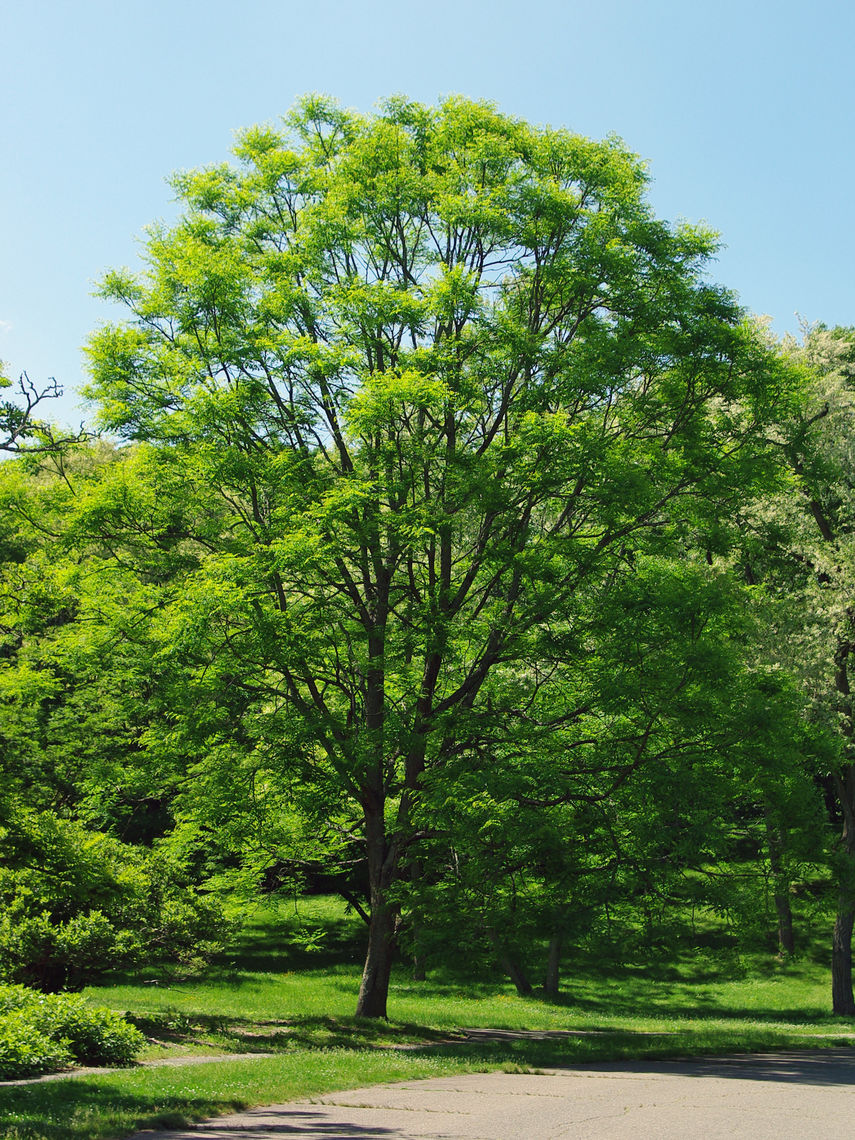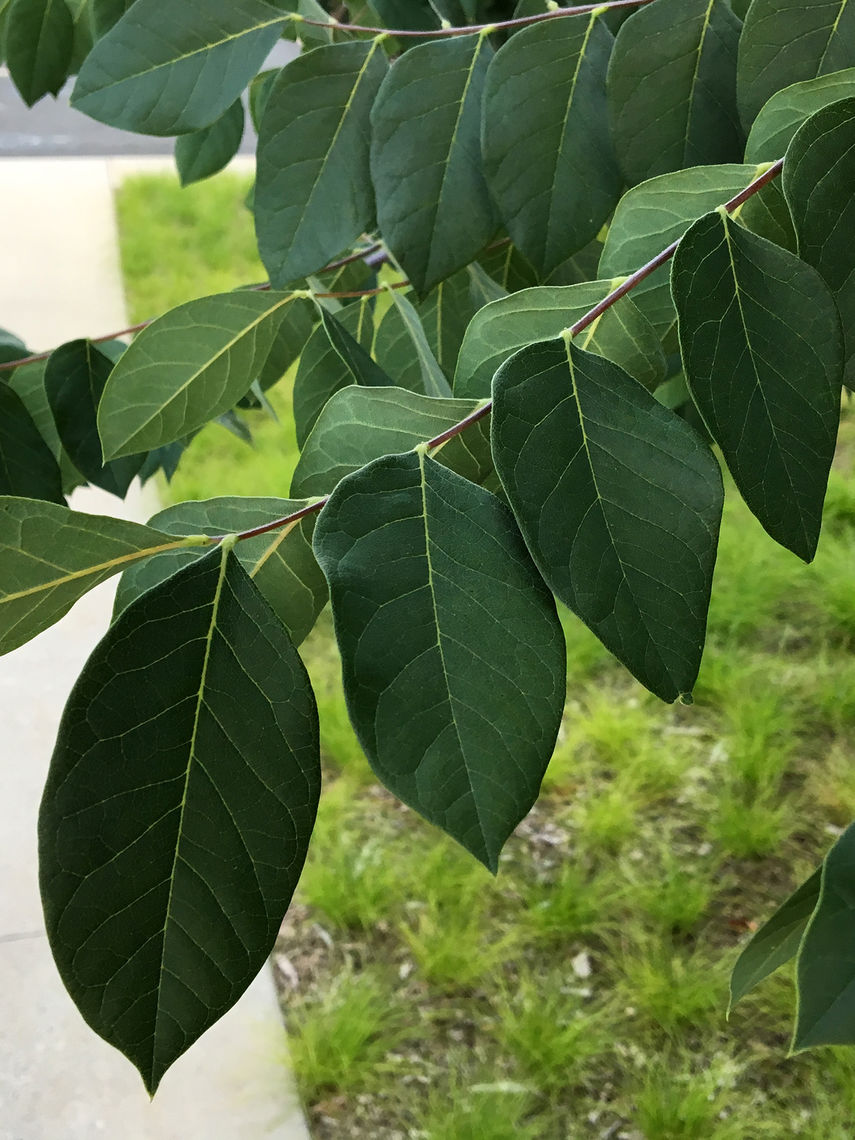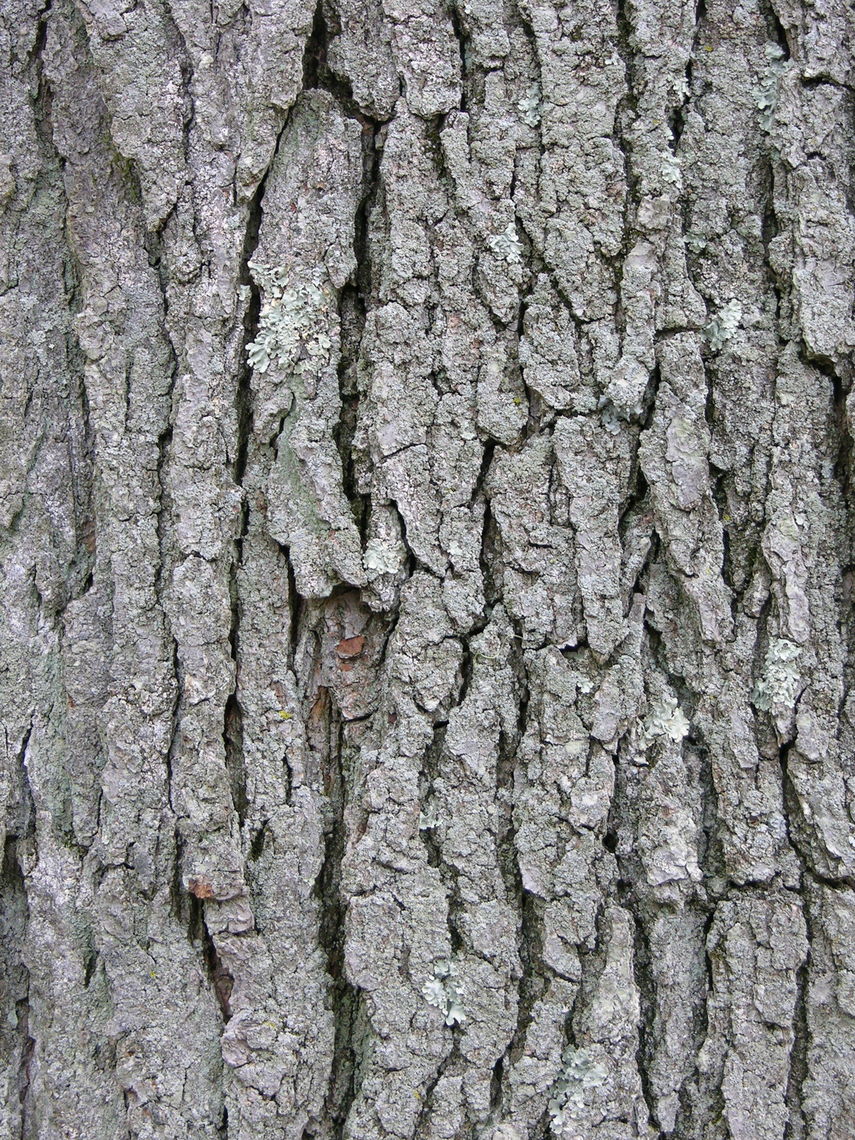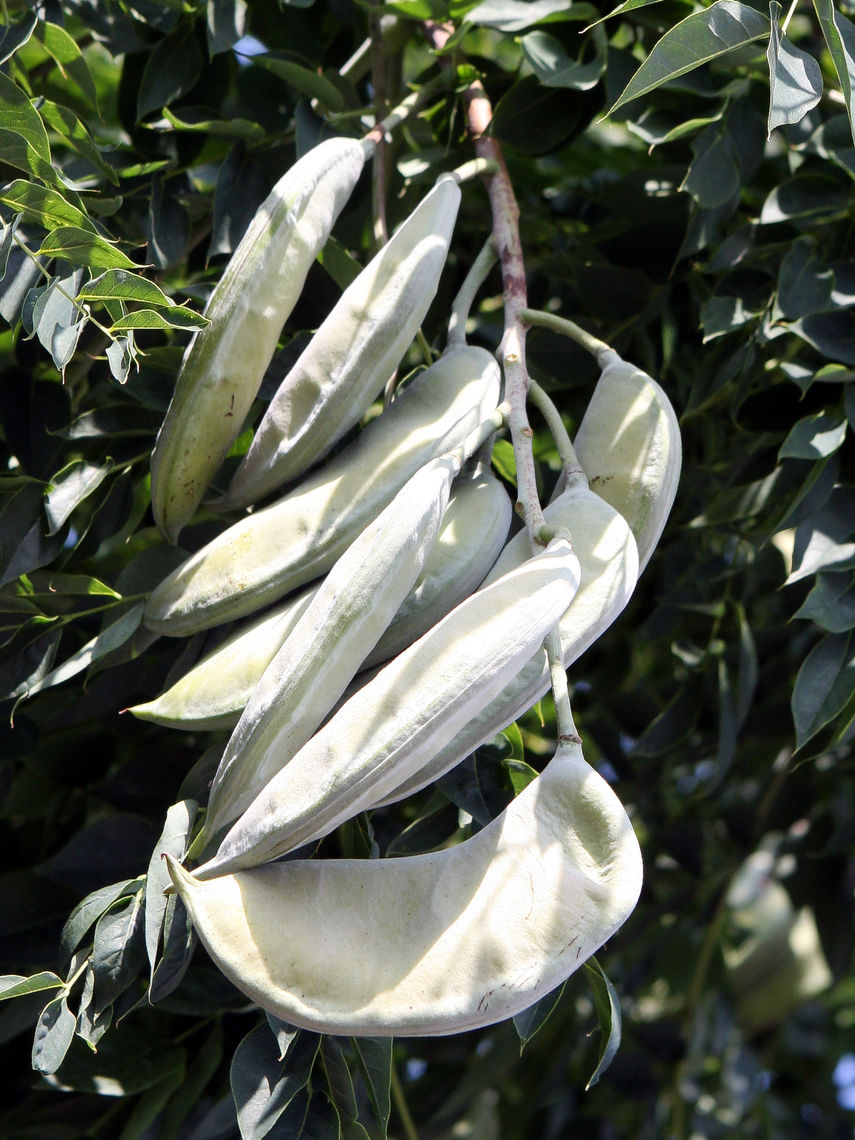Kentucky Coffee Tree (Gymnocladus dioicus)
The Kentucky coffee tree gets its common name from its 5-inch to 10-inch-long, leathery, brown-black pods that ripen in October. Native Americans and early colonists would roast the seeds within these pods to brew a coffee-like (though non-caffeinated) beverage. When roasted, these seeds may also be eaten, though should be never eaten fresh off the tree, since they are toxic raw. The tree's leaves are made up of many small leaflets and its bark is gray-brown, scaly, and rough.
Family: Fabaceae (Pea)
Characteristics: The leaves are bipinnately-compound (leaflets arranged in pairs along small stems, which are arranged in pairs off a larger stem), with many 1.5-inch to 3-inch-long blue-green leaflets. In the fall, leaves turn a dull yellow. In May, green-white flowers begin to bloom. Male flowers appear in 4-inch-long clusters and female flowers appear as 12-inch-long panicles (loose branching clusters) and are fragrant. Male and female flowers appear on separate trees. The female flowers give way to 5-inch to 10-inch-long, leathery, brown-black pods, that ripen in October. Bark is gray-brown, scaly, and rough. When young, the tree has an irregular shape, but with age it becomes more uniformly rounded. This tree grows 60-75 feet high and 40-50 feet wide.
Foliage: Deciduous (leaves lost seasonally)
Geographic Origin: Central and eastern U.S, Canada: Ontario, Quebec (native)
Cultivation Notes: Requires low maintenance. Does best in full sun. Prefers moist and well-drained soil, though is tolerant to a wide range of soil types. However, heavy clay soils should be avoided. This tree is also tolerant to drought and city conditions.
Number on Campus: 5
Sources: Dirr, Morton Arboretum, Missouri Botanical Garden





